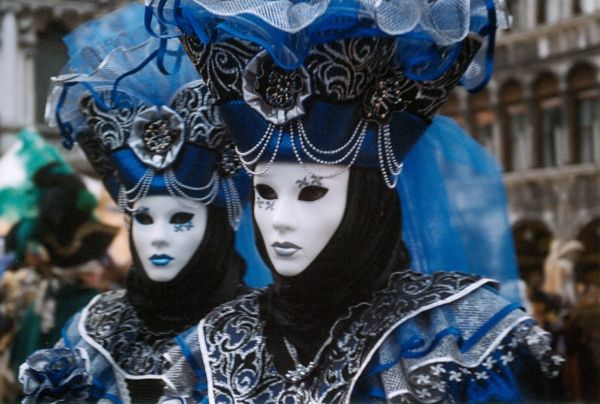My private Italy: the magic of Venice Carnival

Venice, the city on the water, is famous worldwide for its history and undisputed beauty, but especially for the Carnival, one of the most famous in the world.
Venice is much more; it is a magical city, a unique and iconic place, an open-air museum that can fascinate anyone who visits it, a city to explore but, above all, to experience.
I was lucky enough to live in Venice for two years during university, and I can say that I knew a different city than the one I had visited years before. Not because the city grew or because they made improvements, but simply because I lived in it, I walked through its streets as if I were a Venetian and not as if I were a tourist, I saw places I never imagined and loved Venice as only a local can.
Among the celebrations that most characterize Venice, the one I love most is a historical event that is deeply rooted in Venetian culture, going well beyond the simple fun with disguises and streamers: the Carnival
Historical sources say that the first Carnival of Venice was organized in 1094, according to the will of the Doge Vitale Falier. Just at the end of the Middle Ages, in 1296, the Senate of the Serenissima Repubblica di Venezia officially declared the day before Lent as a public holiday: thus, the annual rite of Carnival was born.
Curiosity: maybe you don’t know that in this period, the festivities lasted six weeks. This habit would endure for many centuries.
Carnival festival originates from “Saturnalia”, a pagan Roman cult in which gifts were exchanged and social roles were reversed. From the Roman “Saturnalia”, the Venetian Carnival certainly inherited the goliardic and licentious spirit: during the Carnival, Venetian citizens are allowed, wearing a mask, to mock even the rich and powerful, pretending with their disguise to be like them. In the main areas of the city, there are jugglers, acrobats and musicians, while street vendors offer dried fruit, chestnuts, pancakes and sweets of all kinds.
Already at the end of 1200, in the city began to flourish the first workshops specialized in the production of tools for the processing of papier-mâché, plaster and gauze, the materials with which the masks were formerly made.
Thus was born the figure of the “mascareri”, the artisans who created increasingly rich, decorated and sophisticated masks. Even today, you can see them in action in their typical shops.
One of the most common disguises in ancient Carnival, especially since the eighteenth century and still worn during modern Carnival, is the Baùta (to be pronounced with the accent on the u).
This figure, worn by both men and women, consists of a particular white mask under a black tricorn, completed by a dark cloak called Tabarro. The Baùta was widely used during Carnival time, but also in theatres, parties, gallant meetings and whenever you wanted the freedom to court or be courted, guaranteeing each other total anonymity. For this purpose, the particular shape of the mask on the face ensured the possibility of drinking and eating without having to remove it.
Many women wore a disguise called Moretta, consisting of a small mask of dark velvet, worn with a cap, refined clothing and veils. The Moretta was a mute disguise, since the mask had to be held on the face holding an inner button in the mouth (and for this reason, it was also called “silent servant”).
Masks that entirely cancel the individual’s identity are the peculiarity of Venice Carnival. You no longer belong to any social class, order or religion. Everyone can become what he wants and immerse himself totally in his new character, so much so that he simply greets us with a “Good morning, lady mask”.
The joyful and anonymous participation in this rite of collective disguise was, and still is, the very essence of Carnival. A carefree period of liberation from everyone’s daily habits, prejudices and slander, even against themselves. It was all part of a great masked stage, where actors and spectators merged into a single and immense procession of figures and colours.
The Carnival of Venice reached its popularity peak in the eighteenth century, becoming famous and prestigious throughout Europe. After the fall of the Serenissima, the French first and the Austrians then forbade masking and inaugurated a more “sober” period of Carnival, which lasted even after the final fall of Napoleon, throughout the nineteenth century and much of the twentieth century. In 1979, on the initiative of the City of Venice and some city associations, the current “Carnival” was resumed.
More than 40 years have passed, and the event has become a city icon, with visitors arriving to the lagoon from all over the world with the most extravagant masks.
Among the most popular events, we have “la Festa delle Marie” (the “Party of Marias” and “Il Volo dell’Angelo” (the Flight of the Angel), iconic and traditional activities since the birth of Carnival.
In addition to the big events in the open places, small representations and shows of all kinds (even very transgressive) at private homes, theatres, and cafes spread. Inside many Venetian palaces, grandiose and very long parties with sumptuous masquerade dances are still being held today during the Carnival period, with spectacular masked dances and moments of entertainment, in the style of pomp and eccentricity that only the Carnival of Venice can boast. Only one rule: dress code strictly with vintage clothes! The most famous is Il Ballo del Doge (the Doge’s Ball), an exclusive and extremely lavish event which attracts many guests from all over the world every year. Every year a new theme develops into a breathtaking show. This year, on the occasion of the XXX edition, it will surprise guests even more!
What are you waiting for? Take the opportunity to wear a dream vintage costume designed and created by great Venetian designers, fun awaits you!
Ciao da Francesca
